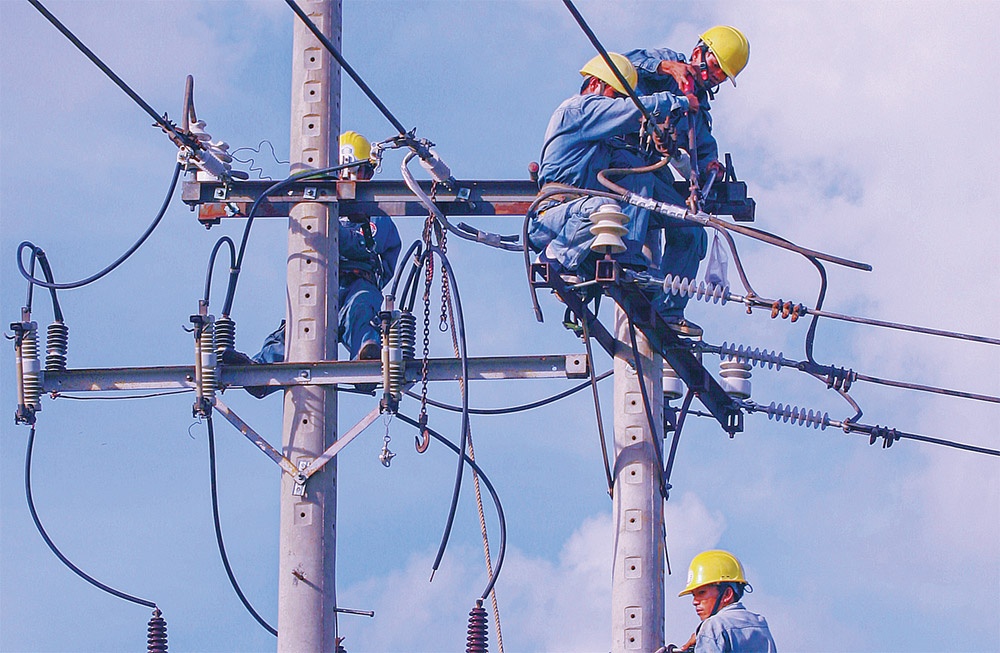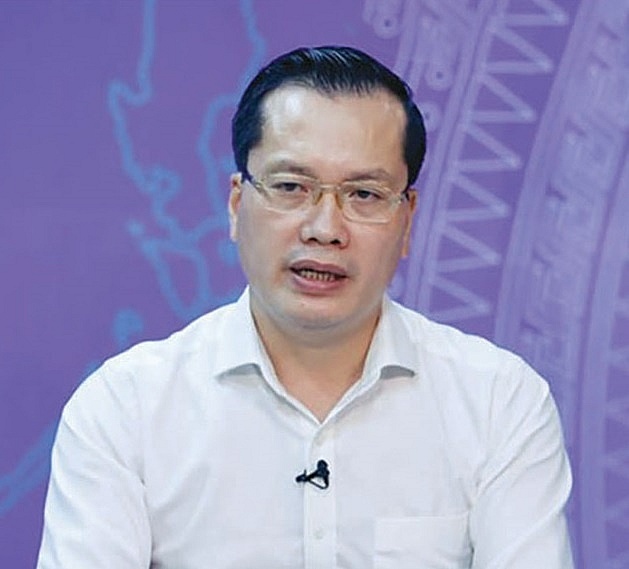Investors expect adjustment in retail power mechanisms
At a meeting chaired by Deputy Prime Minister Tran Hong Ha last week, localities proposed adding a series of new power projects to the National Power Development Plan VIII (PDP8) for the 2021-2030 period and beyond.
The proposals include 20 wind power projects totalling 1,050MW, 132 small-scale hydropower plants of 1,380MW, biomass power projects of 414MW, and two waste-to-energy plants totalling 621MW.
 |
| The total investment needed for the energy sector is projected to be $170-200 million across this decade, Photo Le Toan |
The plan’s implementation, approved in April, aims to ensure effective execution as well as identify specific projects, resources, and coordination mechanisms necessary for the process.
The energy sector in Vietnam is divided into the subsectors of oil and gas, coal, power, and renewable energy. According to government estimates, the development of energy sector facilities and infrastructure will require approximately 93,000-97,000 hectares of land between by 2030, and over 171,000ha from 2031 to 2050.
The total capital investment needed for the energy sector is projected to be $170-200 million across this decade.
The approval of the updated and supplementary plans under PDP8 is critical for localities to move forward with power development and quickly bring new power sources online to ensure the security of supply. However, experts caution that unresolved issues regarding power purchase pricing mechanisms need to be addressed to draw in more investors.
Phan Duc Hieu, a standing member of the National Assembly Economic Committee, said, “It seems that policies related to the power sector remain too rigid in a market that is continuously evolving due to advancements in science and technology, the fight against climate change, and changes in production and business processes.”
Hieu added that the electricity sector, which requires significant capital investment, demands a predictable and synchronised policy framework.
“In some instances, there is a lack of synchronisation in adjusting power purchase prices. For example, we have made strong reforms to attract investment in electricity generation and the wholesale electricity market but have been slow to adjust retail electricity prices, resulting in a lack of alignment,” he added.
Nguyen Tien Thoa, former director of the Price Management Department under the Ministry of Finance, pointed out that electricity prices in Vietnam have not been adjusted to reflect market-based mechanisms.
“The selling prices do not cover production costs, leading to an estimated loss of VND47.5 trillion ($2 billion) for the electricity industry in 2022-23. This loss has created cash flow difficulties, hindering investments in new generation sources and grid expansion,” Thoa said.
He further explained the dilemma of balancing electricity prices to cover production costs while ensuring they remain affordable to support social security, energy security, and inflation control. “These are opposing goals, and it is difficult to harmonise them,” Thoa added.
The ongoing issue of cross-subsidies in electricity pricing also complicates matters. Thoa highlighted the inadequacies in the current cross-subsidy mechanism, which has persisted without a clear adjustment roadmap.
“I have been involved in the Electricity Price Improvement Project since 2019, aiming to reduce cross-subsidies, but there has been little change to date. There is a proposal to abolish cross-subsidies in the amended Law on Electricity,” he said.
Cross-subsidies currently exist between different groups of household electricity consumers, with higher levels subsidising lower levels. Additionally, production and business electricity prices are still cross-subsidised by household electricity prices, with household rates generally higher than those for businesses. Moreover, there are regional disparities, with electricity prices in island communes and districts significantly higher than in other areas, yet still subsidised.
“While it’s necessary for production electricity prices to be lower due to the higher cost of low-voltage consumption, there remains a degree of cross-subsidisation between household and production electricity,” Thoa said.
He concluded by suggesting that social security policies should be separated from electricity pricing to encourage investment in the energy sector. He also reiterated the Politburo’s Resolution No.55-NQ/TW, which calls for the removal of cross-subsidies in electricity prices, a proposal that should be included in the amended Law on Electricity.
| Nguyen Dinh Tuan, director, Son Dong Thermal Power Company
The input materials of coal-fired power plants account for 70-80 per cent of production cost, so changing the fuel source greatly affects the selling price. Currently, factories worried about the instability of coal sources have switched to using imported blended coal and after calculating the selling price. It means the power price is lower than the input materials, affecting the operating mode as well as economic efficiency and corporate governance. In front of these risks, we have some special proposals for coal-fired thermal power, which is to have the interconnection of adjustments from input fuel prices to electricity prices. The second thing is the grid system. To ensure the safety and security of the power grid in the long term, it is necessary to develop sufficient and smart power transmission systems to be able to transmit power sources between regions at any time. The electricity trading mechanism is also an important factor. According to the government’s roadmap, parties can sell electricity directly. However, it is necessary to have the involvement of many parties and many special and specific mechanisms, especially a legal corridor system so that large units and organisations can buy directly from factories. In addition, we need to invest more in energy storage systems for renewable energy plants. Bui Xuan Hoi, energy economics expert
In the current situation, no matter how much effort is put into the power source structure, it is impossible to ignore the primary energy sources, including coal and gas power. And because of the importance of primary electricity in collaboration with the current trend of increasing input fuel prices, I think the cost of electricity supply will increase. Regarding the energy transition trend, Vietnam targets to reach net-zero by 2050, and other countries also want to develop clean electricity, meanwhile, solar power can generate four hours a day at most, and wind power is unstable. Thus, there is no cheap clean electricity. In short, in the context of fluctuations in the world’s geopolitical situation, and energy transition trends, the cost of electricity supply in general will certainly increase. With that, calculating the power prices based on the average retail electricity price is not the core of the current difficulties of the electricity industry. The most important thing is still the price management. If we try to separate the electricity gradually selling prices between public activities and market activities, there will be a suitable price regulation mechanism. I have recommendations that amending the electricity law is an opportunity and must be identified as a real opportunity. Thus, policymakers must do a draft carefully before submitting it to the National Assembly for approval. I have participated in several seminars and see that many drafts are not good enough when submitted to higher levels of authority, and as a result, these drafts were not approved. Making laws is much more complicated than making normal documents. Thus, let’s make a quality draft Law on Electricity which includes all the truly core issues of the industry. Besides that, we must resolutely improve the structure of the retail electricity price list. It is unreasonable to maintain old legislation without adjustments. If we delay adjusting, it will be more difficult to make subsequent adjustments because of the huge impact. |
What the stars mean:
★ Poor ★ ★ Promising ★★★ Good ★★★★ Very good ★★★★★ Exceptional
Related Contents
Latest News
More News
- Heavy industries set for pilot greenhouse gas quotas (December 25, 2025 | 10:00)
- Swedfund invests in MSME growth and climate action in Vietnam (December 19, 2025 | 11:42)
- GreenYellow brings solar energy to light up remote schools in Tuyen Quang province (December 19, 2025 | 08:00)
- Charge+, Grab partner to develop EV charging network in Vietnam (December 18, 2025 | 17:11)
- Linking sci-tech and innovation to Vietnam’s net-zero future (December 18, 2025 | 14:31)
- Driving double-digit growth through green and circular transformation in Vietnam (December 17, 2025 | 09:00)
- Standard Chartered and ACCA deepen collaboration to develop Vietnam’s talent for a sustainable future (December 15, 2025 | 18:18)
- Schaeffler reports strong early output from Dong Nai solar project (December 12, 2025 | 15:16)
- Forestry conference highlights biodiversity and sustainability goals (December 09, 2025 | 13:35)
- Home Credit honoured among top 10 sustainable companies in trade and services (December 09, 2025 | 12:18)



 Tag:
Tag:





















 Mobile Version
Mobile Version